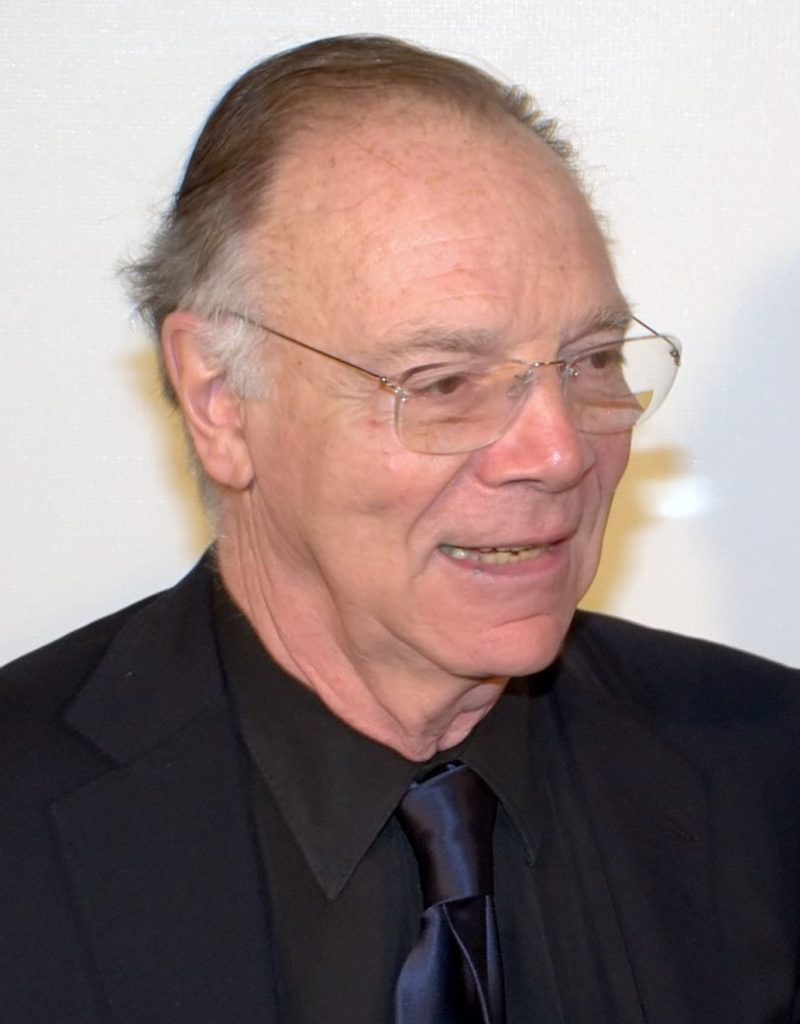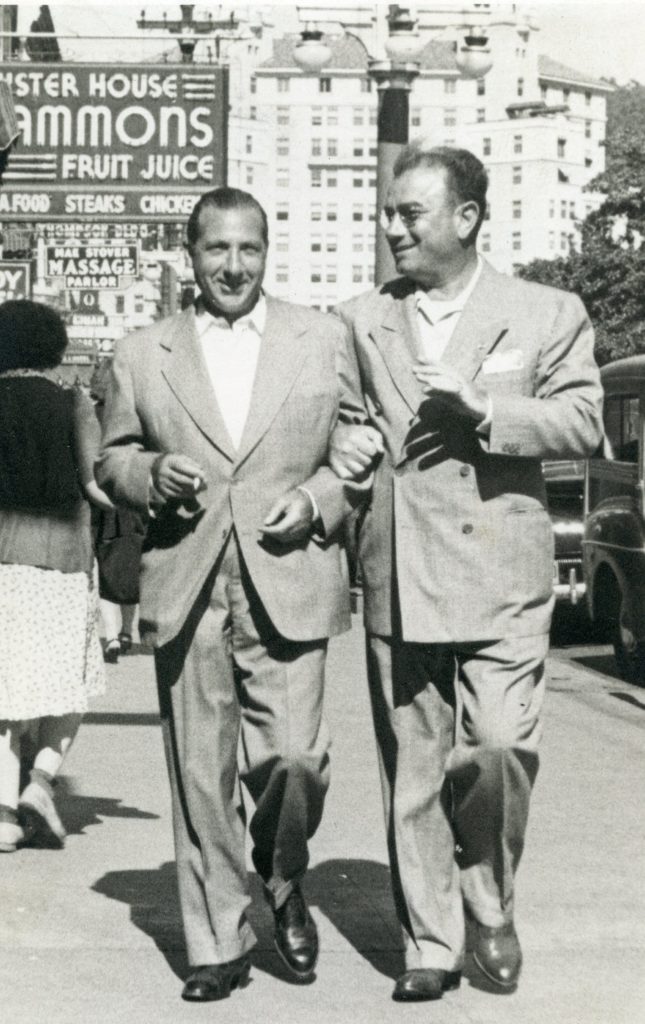
Frank Costello, Vito Genovese feud is focus of upcoming Mob movie
Robert De Niro to star in crime drama scripted by Nick Pileggi

Mob movie veterans Robert De Niro and Nicholas Pileggi are teaming up again, this time for a drama about two of history’s most notorious organized crime figures.
Initial reports indicate De Niro might play both main characters, Frank Costello and Vito Genovese, in the upcoming Warner Bros. production Wise Guys, still in its earliest stages. A theatrical release date has not been set.
The script was written by Pileggi, who co-wrote, with director Martin Scorsese, two classic Mob movies, Goodfellas and Casino, that also feature De Niro in key roles.
Hollywood veteran Barry Levinson is set to direct the new production.
Among other popular movies, Levinson directed Bugsy, a film loosely based on mobster Benjamin “Bugsy” Siegel’s involvement in Las Vegas with the opening of the Flamingo hotel-casino in December 1946. The movie stars Warren Beatty as Siegel, while Annette Bening portrays his girlfriend Virginia Hill.
‘Different directions’

According to Pileggi, the new film will follow Costello and Genovese on their paths to power and explore the fate that awaited each after decades in New York’s underworld.
“Life took them in different directions,” Pileggi said in a telephone interview.
Costello was a backroom wheeler-dealer who exerted influence by maintaining control over public officials. Known as the Prime Minister of the Underworld, he was regarded as a resolution-seeking boss. Genovese, meanwhile, was murderous and manipulative.
“A glare from Genovese’s dark eyes from beneath bushy eyebrows intimidated the bravest mafioso,” Mob expert Selwyn Raab wrote in Five Families: The Rise, Decline, and Resurgence of America’s Most Powerful Mafia Empires.
The separate ambitions of these two powerful mobsters, and their contrasting personalities, would place them on a legendary collision course.
Battle to control crime family
After New York crime boss Charles “Lucky” Luciano was convicted in 1936 on prostitution charges, Genovese, who’d been Luciano’s underboss, took over as acting don. About a year later, however, Genovese fled to Italy, fearing an indictment in an earlier killing.
These events put Costello in charge of the Luciano crime family, a development that Genovese did not easily accept after returning to the United States and regaining a street presence in the years after World War II.
In May 1957, Genovese sent a young Vincent “The Chin” Gigante to kill Costello. The gunman fired a shot that left only a superficial head wound. Though Costello wasn’t seriously injured, the attempt on his life was enough to push him into retirement, ceding the crime family’s ruling authority to Genovese.
By the fall of that year, in a bid to rule the Mafia’s governing body known as the Commission, Genovese conspired on another assault, this one with assassins targeting New York crime boss Albert Anastasia. During a surprise attack, Anastasia was shot to death while seated in a barber’s chair at a Manhattan hotel.
Soon after, Genovese organized a Mob summit at Apalachin, New York, to consolidate his power. But the meeting backfired, as a police raid led to the arrest of more than 60 leading mobsters from across the country.
Failed assassination attempt
Pileggi’s script delves into important differences between Genovese and Costello.

Tony DeStefano, a New York journalist and author, said the Wise Guys film project had been on Pileggi’s radar for at least five years. He remembers talking with Pileggi, beginning around 2017, about Costello’s place in Mob history.
“As we talked, Pileggi suggested to me there is a book there about Costello. I thought for about two seconds and agreed,” DeStefano said in an email. “The book took much work on my part, with occasional calls to Nick for perspective, and I finally got to pull the project together.”
The result was DeStefano’s 2018 book Top Hoodlum: Frank Costello Prime Minister of The Mafia, followed in 2021 by The Deadly Don: Vito Genovese, Mafia Boss.
DeStefano noted that Costello and Genovese were at odds from the time they were under Luciano’s command.
“I think the main problem was that Genovese felt envious of Costello, who was the more polished, politically connected and more astute businessman,” he said. “For those reasons, Costello was given the leadership of the family by Luciano after Genovese left for Europe in the face of the murder rap.”
Costello’s leadership position “grated on Genovese,” DeStefano said.
“Upon his return to New York City in 1945, (Genovese) realized he had missed out on many opportunities in the rackets and wanted Costello to compensate him a share, which didn’t happen.”
Costello moved easily in the world outside the Mob, which Genovese couldn’t or wouldn’t do, DeStefano said.
“Genovese saw Costello in the 1950s as the main impediment to his control of the family,” he said. “So Genovese got Gigante to try and kill Costello in the failed assassination attempt.”
Mob in Las Vegas
For investigators, the assassination attempt uncovered a surprise that exposed Costello’s involvement in a Las Vegas casino.
In going through Costello’s pockets after the shooting, authorities discovered a note reading, “Gross casino win as of 4-27-57—$651,284.” This message was in reference to the Tropicana hotel-casino on the Las Vegas Strip, which had opened several weeks before Costello was wounded.
The note revealed Costello’s hidden interest in the resort, whose visionaries included Phil Kastel, a Costello associate in Louisiana slot machine routes.
DeStefano pointed out that the note “led to the cops focusing on Costello and his ties to Las Vegas and the Tropicana.”
Law enforcement scrutiny would intensify over the years, leading to further underworld scandals in Las Vegas, including an investigation into a casino skimming pipeline from the Tropicana to the Civella crime family in Kansas City.
The final years
Not long after Costello stepped aside, Genovese ran into serious trouble with the law, culminating in a 1959 felony conviction for heroin trafficking. A decade later, locked in a Missouri federal prison, Genovese died of a heart attack at age 71.

Throughout the years, the crime family that Genovese took over by force and intimidation has continued to bear his name. It is one of the Mafia Five Families still operating in New York City.
For his part, Costello was respected by other Mafioso in his later life and remained close to associates such as Meyer Lansky. Costello died of natural causes in 1973. He was 82.
The upcoming Warner Bros. production, with Pileggi’s script providing the storyline, will examine how these two historical Mafia bosses embarked on criminal lives that resulted in different outcomes.
In retrospect, Pileggi said, Costello ended up in better shape than his imprisoned rival, Genovese.
“If ever there was an organized crime figure who came out pretty good, it was Frank Costello,” he said.
Larry Henry is a veteran print and broadcast journalist. He served as press secretary for Nevada Governor Bob Miller, and was political editor at the Las Vegas Sun and managing editor at KFSM-TV, the CBS affiliate in Northwest Arkansas. Today, he is a senior reporter for Gambling.com. The Mob in Pop Culture blog appears monthly.
Feedback or questions? Email blog@themobmuseum.org





